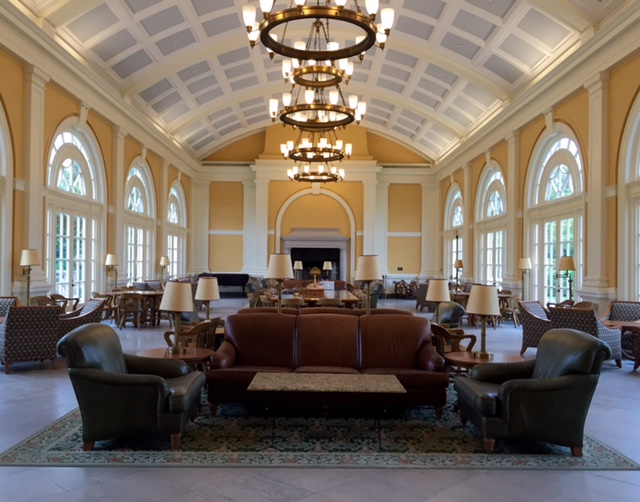The next day we started walking on the dikes every day with Jacques, the big black water-loving poodle. Sometimes we went at the wrong time and there was no water for him to jump in; only wavelike crevices of mud, glistening in the sun. But Jacques always forgave us, and made the best of it, running through the tall grass, racing with us down the path, finding special rocks to carry home in his mouth, his joy contagious.
 |
and clamber up the ancient mound of earth just beyond his fence, and wonder what we would see. How high would the water be? What shades of light and shadow and color would appear?
And every day it was different.
When the tide was high Jacques would go swimming, and fetch sticks we threw in the water for him. He was almost always sopping wet when we got home. And happy.
Sometimes we would meet other people on the dikes, riding bikes, or walking their dogs. They said Jacques was pretty, and the friendliest dog in the world. No one said he was smart. But we knew. After only a few days we had him trained to know when it was time to go home. We would set the music alarm on Gary's phone, and when the trumpets sounded Jacques would stop dead in his tracks. He would look down the path and consider, and then without a word from us, he would turn around and start heading home. Without complaint.
But what was it exactly that we were walking on?
We went to an Acadian historical site, and listened to the inspired guide tell us things we didn't know about these piles of rock and dirt that were under our feet every day. About the ingenious system of valves and water gates that allowed the Acadians to reclaim the soil of the salt marshes from the highest and fastest tides in the world, and turn it into rich and fertile farmland. About the enormous amounts of work and cooperation and patience this required. She told us about the great expulsion in the 18th century, when the British stripped all the Acadians of their rights, loaded them onto overcrowded ships, and sent them away to parts unknown. She told us how ten thousand Acadians were either deported or imprisoned, but that some of them had to be released in order to keep the dikes working, because the system was so complex. She talked to us about killing and trauma and terror. And one of the last things she said to us is that she wonders sometimes if all the terrible things that happen to people somehow stay in their DNA, and that's why we're all so messed up.
Which makes you wonder too.
And when you're not out walking on the dikes, or exploring Kings County, you turn on the tv to see what's happening in the world, and there is the leading Republican presidential candidate talking about building more walls, instead of tearing them down, and there is another shooting in another movie theater, and the same shrill voices saying if only everyone carried a gun everywhere, we would all be safer, and there are animals being tortured and children dying and the ocean is full of plastic. And the most logical response seems to be to go back to bed and pull the covers up over your head and never come out.
But the dog needs to go for a walk.
So you go out to the dikes again, and walk on history. And you think about terror and DNA, about how little you know about anything, and how helpless you feel, and how hopeless it all seems. And then Jacques runs by, leaping and jumping through the tall green grass. He's racing with you. He's searching for the perfect rock to take home and add to his collection. He's jumping in the water to get sticks. He's jumping in the water even if there aren't any sticks. He's smiling. Which makes you smile. And at least for today, it's enough.






































